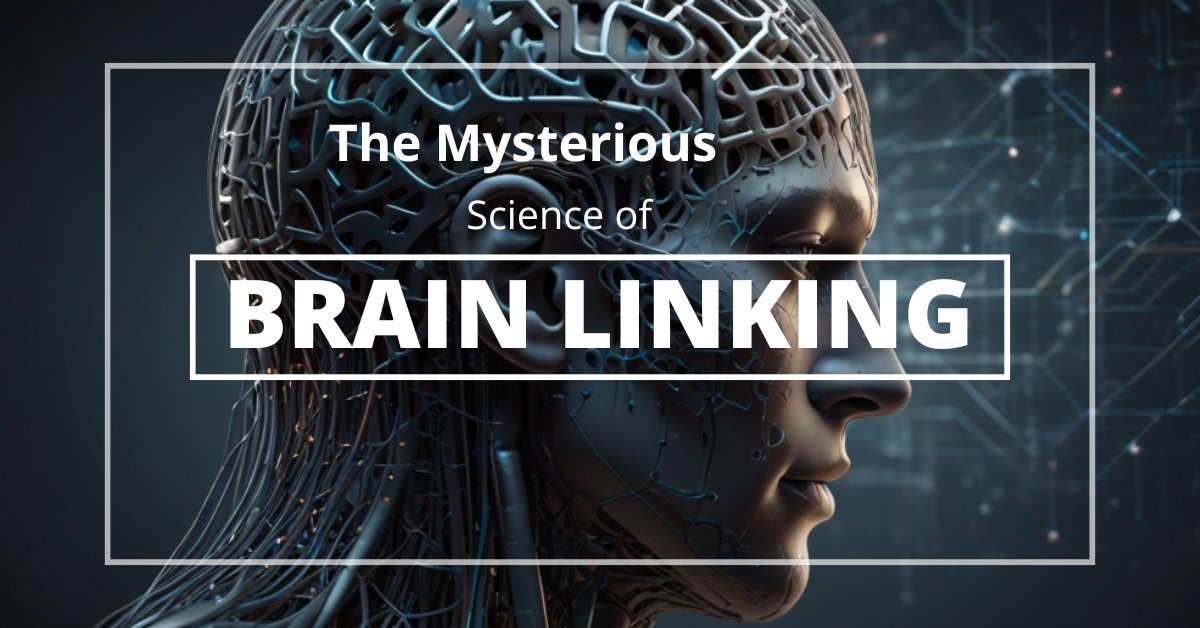The human brain remains an enigma, even to the most astute of scholars. With its billion neurons forming trillions of connections, giving rise to the symphony we call the human experience, the brain is a universe of its own. But beyond the literal and the tangible, there exists a science that probes the very essence of our consciousness—the mysterious science of brain linking. This in-depth exploration weaves through the most intriguing facets of neurology, offering insight into the profound questions that lie at the intersection of the mind and the material organ that houses it.
Where is Consciousness Located in the Brain?
Despite decades of research and technological advancements, pinning down the precise location of consciousness in the brain continues to elude neuroscientists. Is it nestled within the complex network of the cerebral cortex, or does it lie in the intricate folds of the frontal lobes? Some theories propose that a dual stream of processes gives rise to our awareness; one running through the more ancient structures of the brain, and another forging its path through the neocortex, the pinnacle of mammalian evolution. In this section, we scrutinize the quest to identify the geographical locale of consciousness within the cerebral terrain.

Does the Brain Create Consciousness?
During the dusk of the 19th century, consciousness was often attributed to a metaphysical entity separate from the physical brain. However, recent advancements in neuroscience have shed light on the brain’s role in crafting our subjective experience. The idea that the brain is a mere receptor, where consciousness is received, no longer holds sway over modern thought. Instead, we turn our focus to the dynamic and finely tuned neural circuits that orchestrate the theater of our perception, memory, and cognition, raising the profound query—does the brain create consciousness?
How Does the Brain Create Consciousness?
Closely intertwined with the query of creation is the question of mechanism. If indeed the brain is the creator of consciousness, how does it achieve this remarkable feat? Could it be through synchronizing neural oscillations, integrating information across distant brain regions, or modulating the firing rates of neurons? This section dissects the intricate dance of neural processes, aiming to uncover the modus operandi of consciousness creation within the brain’s labyrinthine pathways.
What is Brain Science Called?
Brain science, or neuroscience, is the multidisciplinary domain that studies the complex structure, function, and potential maladies of the brain. Employing methodologies from biology, medicine, psychology, and even computer science, neuroscience ventures to demystify the neurological processes that underpin every facet of human existence. From mapping the brain’s connectome to decoding the enigmatic language of neural activity, brain science is at the forefront of scientific inquiry, guiding us toward a deeper comprehension of our most complex organ.
How Much of the Brain Has Been Discovered?
It is often said that we have explored more of space than we have ventured into the recesses of the human brain. While this statement may be hyperbolic, there remains a kernel of truth in the sentiment it conveys. Neuroscience has made staggering advancements, yet a vast expanse of the brain’s functioning and structure remains uncharted. With every discovery, we reveal layers of complexity that defy our current understanding, propelling us into an era where the efforts to map the brain are as awe-inspiring as they are humbling.
The Mysterious Science of Brain Linking - Scientific American Summary
Scientific American, the vanguard of scientific journalism, has long been at the nexus of compelling insights and discoveries in the realm of brain science. Through its pages, the mysterious science of brain linking has been unraveled in various interlinked articles that span from the theoretical to the applied. This section offers a glimpse of the seminal work published by the prestigious magazine, emphasizing the synaptic junctures that weave a narrative of cerebral connectivity—a tapestry that forms the bedrock of consciousness and cognition.
Mysterious Science of Brain Linking with Others
 One of the most striking features of the human brain is its capacity for social interaction—to connect not only with neural pathways but with the minds of others. The mysterious science of brain linking extends beyond individual introspection to the collective consciousness that arises when multiple brains synchronize. From mirroring actions to sharing emotions, this is a domain where the brain’s linking mechanisms become conduit for empathy, communication, and the very fabric of societal bonds.
One of the most striking features of the human brain is its capacity for social interaction—to connect not only with neural pathways but with the minds of others. The mysterious science of brain linking extends beyond individual introspection to the collective consciousness that arises when multiple brains synchronize. From mirroring actions to sharing emotions, this is a domain where the brain’s linking mechanisms become conduit for empathy, communication, and the very fabric of societal bonds.
How Does Your Brain Control Your Body, Mystery Science
The brain’s role as the command center of the body is a fundamental tenet of neuroscience. Yet, the intricacies of how this control is exerted over the motley crew of muscles, organs, and senses remain shrouded in mystery. This section explores the enigmatic codes and signals that flow from the brain to every corner of the body, ensuring its harmonious operation. From the onset of a thought to the execution of a precise motor action, the brain’s mastery over the corporeal form is a constant source of wonder and inquiry.
Is Consciousness a Brain Process Place?
 In the annals of philosophy and science, the debate over the nature of consciousness rages on. Is it merely a product of the brain’s physical processes, or does it harbor a more transcendental essence? By probing into the lateral geniculate nucleus or pondering over the prefrontal cortex, we strive to apprehend whether consciousness is unequivocally a brain-bound process place. This section navigates the philosophical currents that have long lapped at the shores of neurology, casting a discerning gaze on the relationship between the mind and the matter from which it springs.
In the annals of philosophy and science, the debate over the nature of consciousness rages on. Is it merely a product of the brain’s physical processes, or does it harbor a more transcendental essence? By probing into the lateral geniculate nucleus or pondering over the prefrontal cortex, we strive to apprehend whether consciousness is unequivocally a brain-bound process place. This section navigates the philosophical currents that have long lapped at the shores of neurology, casting a discerning gaze on the relationship between the mind and the matter from which it springs.
Why is the Brain so Mysterious?
The brain’s opaqueness to scientific scrutiny is multifaceted. Not only is it the most complex structure in the known universe, but it is also the seat of the very inquiry that seeks to understand it—leading to what some have aptly termed an ‘epistemological loop’. Outlining the reasons behind the brain’s mystery is a task that requires insight into fields as diverse as psychology, evolutionary biology, and quantum physics. In this section, we unravel the layers of this enigma, laying bare the various lenses through which we can gaze into the depths of the cerebral unknown.
Why Has the Human Brain Evolved?
The human brain’s evolutionary trajectory is a tale of adaptability, innovation, and the relentless quest for survival. From the archaic brainstem to the emergent neocortex, its growth has been the catalyst for the development of language, culture, and the tools that have marked our species as unique in the animal kingdom. This segment provides a comprehensive overview of the forces that have shaped the brain’s evolution, from the selective pressures of the Pleistocene to the cultural evolution that continues to sculpt the human mind.
What Part of the Brain Produces Consciousness?
The seat of consciousness is a perennial puzzle, with no shortage of contenders vying for the title. While the cerebral cortex and its diverse regions have been subject to most of the scrutiny, the thalamus, the brainstem and even the glial cells have not escaped suspect. This section catalogues the leading hypotheses about the part of the brain that produces consciousness, and the evidence that both supports and challenges these assertions.
How Much of the Human Brain Has Been Discovered?
Quantifying the breadth of our knowledge about the human brain is a daunting task. Yet, we press on with questionnaires, brain atlases, and neuroimaging techniques that offer glimpses into the myriad operations of our enigmatic organ. This section provides an overview of what has been discovered, illuminating the terrain that neuroscience has conquered and the territories that remain undiscovered.
How Much of the Brain is Unknown?
It is not just the sheer amount of unknown in the brain that is daunting; it is the recognition that the unknown is not some peripheral segment, but a fundamental aspect of its core functions. The question is not merely about the unknown knowns, but the vast expanse of the unknown unknowns. This portion takes stock of the mystery that shrouds the brain, underscoring the gaps in our understanding and the work that lies ahead for future generations of neuroscientists.
How Much of the Brain Do Scientists Understand?
While it is tempting to measure understanding in percentages, the nature of science defies such simplistic metrics. What we can say with certainty is that we understand much more about the brain than we did a century ago, and every advancement brings us closer to unraveling the complex web of neural mechanisms. In this section, we reflect on the current state of our understanding, celebrating the milestones while remaining acutely aware of the substantial ground that awaits exploration.
Conclusion
The mysterious science of brain linking is a narrative that weaves together the oldest questions of humanity with the newest of neurological inquiry. It is a tale of ceaseless discovery, a reminder that the brain, like the mind it houses, is an unfathomable universe waiting to be explored. From the depths of the subconscious to the heights of conscious thought, the brain’s enigmatic dance with our experiences is a tapestry that grows richer with every thread of knowledge we unravel.
Frequently Asked Questions
The primary focus of brain science is to understand the brain’s structure, function, and how it gives rise to various cognitive abilities and behaviors. This encompasses disciplines such as neurobiology, neurology, psychology, and psychiatry.
Efforts to map the entire human brain are ongoing, with projects like the Human Connectome Project pushing the boundaries of what we can visualize and understand. However, the sheer complexity of the brain means that a complete map, down to the individual function of each neuron, remains a distant aspiration.
Brain linking studies, which explore the synchronization of brain activity across individuals, shed light on how the brain processes social interactions and shared experiences. By implicating specific brain networks in such phenomena, these studies contribute to our understanding of the neural underpinnings of consciousness.







